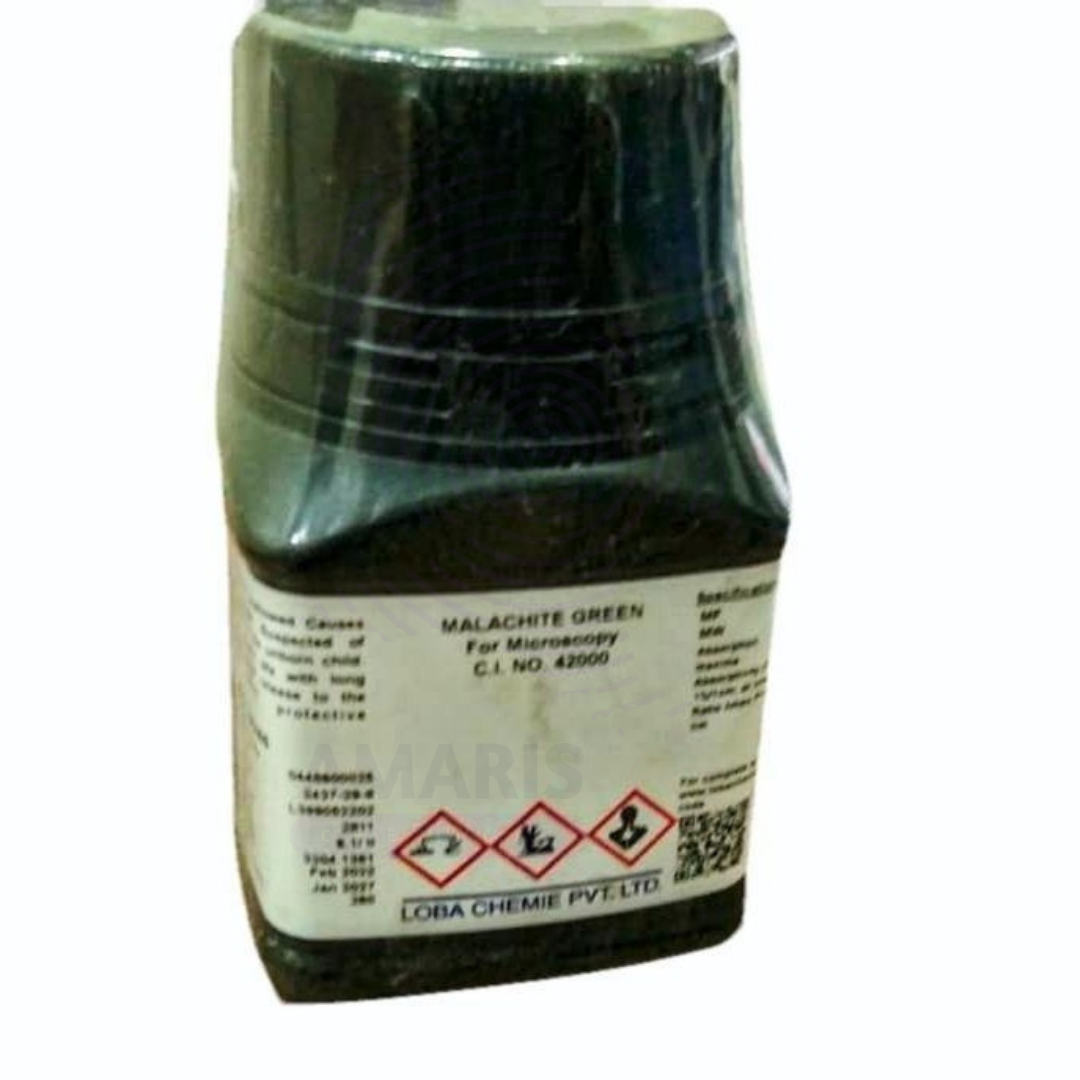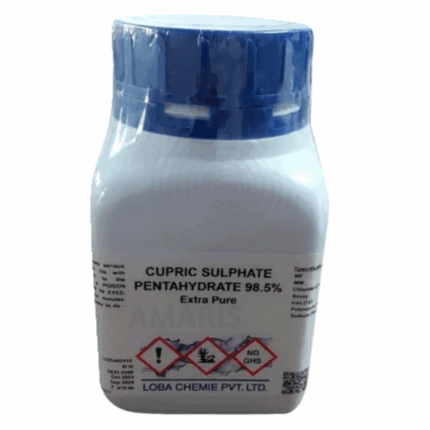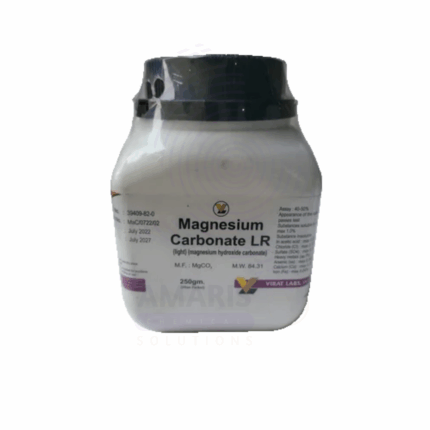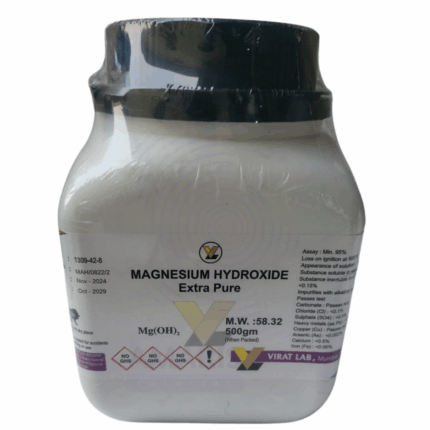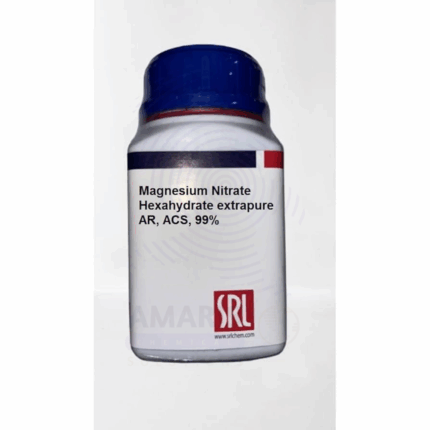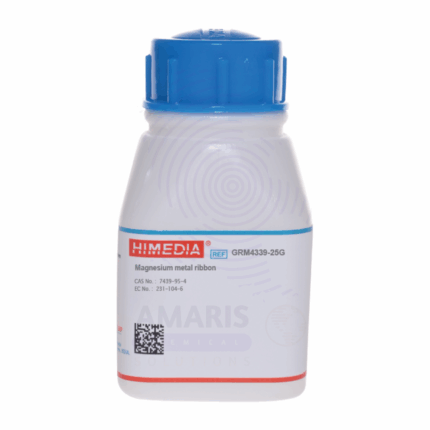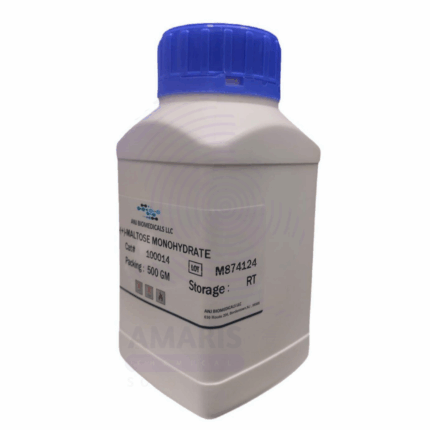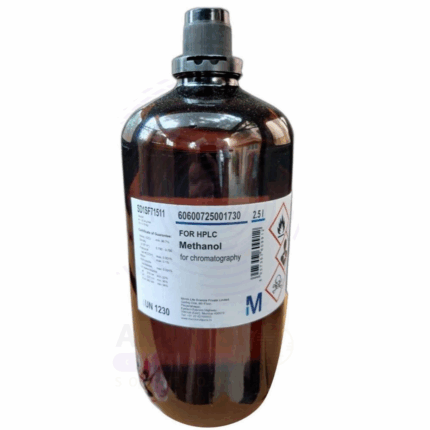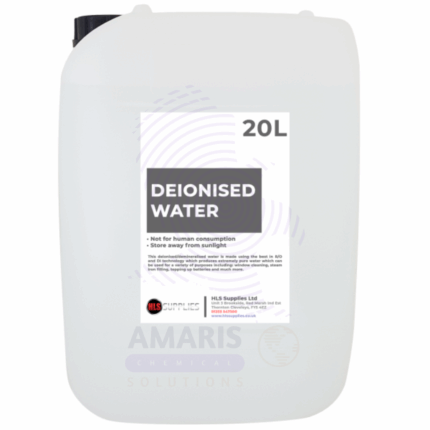

Malachite Green Extra Pure
$ 18.00 Original price was: $ 18.00.$ 17.89Current price is: $ 17.89.
Malachite Green Extra Pure is a synthetic dye of exceptional purity, recognized for its intense green coloration and versatile laboratory uses. It is commonly used as a biological stain, especially in microbiology for identifying and differentiating bacterial species, and in histology for staining cell structures. Additionally, Malachite Green serves as an effective fungicide and antiparasitic agent in aquaculture and laboratory testing. Its high purity ensures reliable performance in analytical applications, including redox titrations and as a pH indicator in specific chemical reactions. Its vivid color and chemical stability make it a valuable reagent in both teaching and professional research settings.
Malachite Green Extra Pure
Primary Uses
- Biological Stain:
- Widely used as a histological stain in microscopy for staining bacterial spores, fungi, and cytoplasmic structures.
- Microbiological Identification:
- Functions as a selective dye in culture media (e.g., Lowenstein–Jensen medium for Mycobacterium tuberculosis).
Secondary Uses
- Aquatic Pathogen Studies:
- Utilized in research for controlling fungal and protozoan infections in fish, though its use is regulated.
- Indicator Dye:
- Occasionally used as a pH or redox indicator in certain specialized chemical tests.
- Demonstration of Dye Adsorption:
- Used in educational experiments to study adsorption, dye uptake by tissues, or dye removal from water.
| PACK SIZE |
25 grams Plastic Tin |
|---|
1. Basic Identification Attributes
- Chemical Name: Malachite Green
- Synonyms: Basic Green 4, Aniline Green, C.I. 42000
- CAS Number: 569-64-2 (oxalate) / 2437-29-8 (chloride)
- Molecular Formula: C₂₃H₂₅ClN₂ (chloride)
- Molecular Weight: 364.91 g/mol (chloride)
- Appearance: Green crystalline powder
- Odor: Odorless
- Solubility: Soluble in water and alcohol
- Grade: Extra Pure
- Color Index Number: C.I. 42000
- Physical Form: Powder
2. Safety & Hazard Attributes
- GHS Classification:
- Acute Toxicity (Oral) – Category 4
- Aquatic Acute – Category 1
- Aquatic Chronic – Category 1
- Hazard Statements:
- H302: Harmful if swallowed
- H400: Very toxic to aquatic life
- H410: Very toxic to aquatic life with long-lasting effects
- Precautionary Statements:
- P273: Avoid release to the environment
- P301 + P312: IF SWALLOWED: Call a POISON CENTER/doctor if you feel unwell
- P391: Collect spillage
- P501: Dispose of contents/container in accordance with local regulations
- Personal Protective Equipment (PPE):
- Protective gloves
- Safety goggles
- Lab coat
- Dust mask or respirator if airborne particles are present
- First Aid Measures:
- Inhalation: Move to fresh air; seek medical advice if symptoms persist
- Skin Contact: Wash with soap and water
- Eye Contact: Rinse cautiously with water for several minutes
- Ingestion: Rinse mouth; do not induce vomiting; consult a physician
- Fire Hazards:
- Not highly flammable
- Use dry chemical, water spray, foam, or CO₂ for extinguishing
3. Storage & Handling Attributes
- Storage Conditions:
- Store in a tightly closed container
- Keep in a dry, cool, and well-ventilated place
- Protect from moisture and direct sunlight
- Handling Tips:
- Avoid contact with skin, eyes, and clothing
- Prevent release into the environment
- Use in a fume hood if dust is generated
4. Laboratory Applications
- Primary Uses:
- Biological stain for histology and cytology
- DNA staining and differentiation in microscopy
- Analytical reagent in chemistry labs
- Secondary Uses:
- Antifungal and antiparasitic agent in aquaculture (not recommended due to toxicity)
- Demonstrations and experiments in school labs for dye behavior and chromatic separation
- Redox indicator in some analytical procedures
SAFETY PRECAUTIONS
Personal Protective Equipment (PPE):
- Wear a lab coat, nitrile gloves, and chemical splash goggles.
- Use a dust mask or operate under a fume hood to avoid inhalation.
Handling:
- Avoid contact with skin, eyes, and clothing.
- Do not breathe dust or vapors.
- Handle with care to prevent spills and dust formation.
- Wash hands thoroughly after use.
Storage:
- Store in a cool, dry, and well-ventilated location.
- Keep the container tightly closed and away from light and moisture.
- Incompatible with strong oxidizers and strong acids.
FIRST AID MEASURES
Inhalation:
- Move the person to fresh air immediately.
- Seek medical attention if symptoms such as coughing or shortness of breath occur.
Skin Contact:
- Rinse thoroughly with plenty of water and soap.
- Remove contaminated clothing.
- Get medical advice if irritation or staining develops.
Eye Contact:
- Rinse eyes cautiously with clean water for several minutes.
- Remove contact lenses if present and easy to do.
- Seek medical attention if irritation persists.
Ingestion:
- Rinse mouth with water.
- Do not induce vomiting.
- Call a poison center or doctor immediately.
FIRE FIGHTING MEASURES
Flammability:
- May be combustible at high temperatures.
Extinguishing Media:
- Use dry chemicals, carbon dioxide (CO₂), or foam.
- Use water spray to cool containers, but avoid spreading powder.
Hazardous Combustion Products:
- Emits toxic fumes such as carbon oxides and nitrogen oxides when burned.
Firefighter Protection:
- Use self-contained breathing apparatus (SCBA) and full protective gear.


 Preservatives(food)
Preservatives(food) Flavor Enhancers
Flavor Enhancers Acidulants
Acidulants Sweeteners
Sweeteners Antioxidants
Antioxidants Colorants(food)
Colorants(food) Nutraceutical Ingredients (food)
Nutraceutical Ingredients (food) Nutrient Supplements
Nutrient Supplements Emulsifiers
Emulsifiers
 Collectors
Collectors Dust Suppressants
Dust Suppressants Explosives and Blasting Agents
Explosives and Blasting Agents Flocculants and Coagulants
Flocculants and Coagulants Frothers
Frothers Leaching Agents
Leaching Agents pH Modifiers
pH Modifiers Precious Metal Extraction Agents
Precious Metal Extraction Agents
 Antioxidants(plastic)
Antioxidants(plastic) Colorants (Pigments, Dyes)
Colorants (Pigments, Dyes) Fillers and Reinforcements
Fillers and Reinforcements Flame Retardants
Flame Retardants Monomers
Monomers Plasticizers
Plasticizers Polymerization Initiators
Polymerization Initiators Stabilizers (UV, Heat)
Stabilizers (UV, Heat)
 Antifoaming Agents
Antifoaming Agents Chelating Agents
Chelating Agents Coagulants and Flocculants
Coagulants and Flocculants Corrosion Inhibitors
Corrosion Inhibitors Disinfectants and Biocides
Disinfectants and Biocides Oxidizing Agents
Oxidizing Agents pH Adjusters
pH Adjusters Scale Inhibitors( water)
Scale Inhibitors( water)
 Antioxidants(cosmetic)
Antioxidants(cosmetic) Emollients
Emollients Fragrances and Essential Oils
Fragrances and Essential Oils Humectants
Humectants Preservatives
Preservatives Surfactants(cosmetic)
Surfactants(cosmetic) Thickeners
Thickeners UV Filters
UV Filters
 Fertilizers
Fertilizers Soil Conditioners
Soil Conditioners Plant Growth Regulators
Plant Growth Regulators Animal Feed Additives
Animal Feed Additives Biostimulants
Biostimulants Pesticides (Herbicides, Insecticides, Fungicides)
Pesticides (Herbicides, Insecticides, Fungicides)
 Active Pharmaceutical Ingredients (APIs)
Active Pharmaceutical Ingredients (APIs) Excipients
Excipients Solvents(pharmaceutical)
Solvents(pharmaceutical) Antibiotics
Antibiotics Antiseptics and Disinfectants
Antiseptics and Disinfectants Vaccine Adjuvants
Vaccine Adjuvants Nutraceutical Ingredients (pharmaceutical)
Nutraceutical Ingredients (pharmaceutical) Analgesics & Antipyretics
Analgesics & Antipyretics
 Analytical Reagents
Analytical Reagents Solvents(lab)
Solvents(lab) Chromatography Chemicals
Chromatography Chemicals Spectroscopy Reagents
Spectroscopy Reagents microbiology-and-cell-culture-reagents
microbiology-and-cell-culture-reagents Molecular Biology Reagents
Molecular Biology Reagents Biochemical Reagents
Biochemical Reagents Inorganic and Organic Standards
Inorganic and Organic Standards Laboratory Safety Chemicals
Laboratory Safety Chemicals Specialty Laboratory Chemicals(Special Laboratory Equipment)
Specialty Laboratory Chemicals(Special Laboratory Equipment)
 Demulsifiers
Demulsifiers Hydraulic Fracturing Fluids
Hydraulic Fracturing Fluids Scale Inhibitors(oil)
Scale Inhibitors(oil) Surfactants(oil)
Surfactants(oil) Drilling Fluids
Drilling Fluids
 Dyes and Pigments
Dyes and Pigments Bleaching Agents
Bleaching Agents Softening Agents
Softening Agents Finishing Agents
Finishing Agents Antistatic Agents
Antistatic Agents
 Admixtures
Admixtures Waterproofing Agents
Waterproofing Agents Sealants and Adhesives
Sealants and Adhesives Curing Compounds
Curing Compounds Concrete Repair Chemicals
Concrete Repair Chemicals Anti-Corrosion Coatings
Anti-Corrosion Coatings
 Surfactants(cleaning)
Surfactants(cleaning) Builders
Builders Enzymes
Enzymes Solvents (Cleaning)
Solvents (Cleaning) Fragrances
Fragrances
 Electronic Chemicals
Electronic Chemicals Catalysts
Catalysts Lubricants
Lubricants Photographic Chemicals
Photographic Chemicals Refrigerants
Refrigerants Automotive chemicals
Automotive chemicals Pyrotechnic Chemicals
Pyrotechnic Chemicals
 Biodegradable Surfactants
Biodegradable Surfactants Bio-based Solvents
Bio-based Solvents Renewable Polymers
Renewable Polymers Carbon Capture Chemicals
Carbon Capture Chemicals Wastewater Treatment Chemicals
Wastewater Treatment Chemicals
 Pigments
Pigments Solvents(paint)
Solvents(paint) Specialty Coatings
Specialty Coatings Binders/Resins
Binders/Resins Additives
Additives Driers
Driers Anti-Corrosion Agents
Anti-Corrosion Agents Functional Coatings
Functional Coatings Application-Specific Coatings
Application-Specific Coatings
 Fresh Herbs
Fresh Herbs Ground Spices
Ground Spices Whole Spices
Whole Spices Spice Blends
Spice Blends Dried Herbs
Dried Herbs
 Leavening Agents
Leavening Agents Dough Conditioners
Dough Conditioners Flour Treatments
Flour Treatments Fat Replacers
Fat Replacers Decoratives
Decoratives Preservatives(baking)
Preservatives(baking)
 Plasticizers & Softeners
Plasticizers & Softeners Reinforcing Agents
Reinforcing Agents Adhesion Promoters
Adhesion Promoters Vulcanizing Agents
Vulcanizing Agents Antidegradants
Antidegradants Blowing Agents
Blowing Agents Fillers & Extenders
Fillers & Extenders Accelerators & Retarders
Accelerators & Retarders